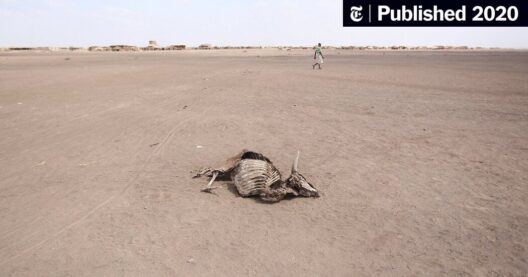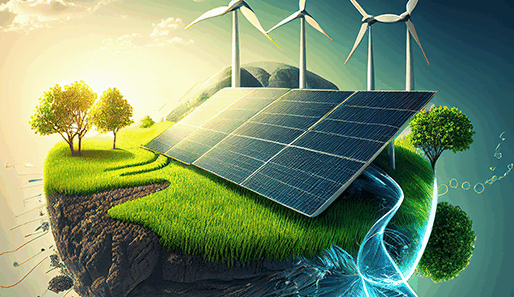The quest for sustainable energy sources is akin to the fabled quest for the Holy Grail, a journey that unravels deeper truths about our planet and ourselves. As we navigate the pathways illuminated by geothermal, nuclear, solar, and wind energy, we unearth not merely resources but also a philosophy of conservation that calls for reverence, innovation, and community engagement.
Understanding how we can conserve our energy resources is pivotal. Each energy source, much like a unique gem, offers distinct advantages and challenges, and our stewardship determines their sustainability. Let’s explore the nuances of conservation within each of these energy paradigms.
Geothermal Energy: Tapping into Earth’s Core
Geothermal energy is likened to the Earth’s hidden heart, radiating warmth from within. Harnessing this energy requires a delicate balance – one must ensure that extraction does not surpass the natural replenishment of heat from the Earth’s core. Conservation of geothermal energy involves optimizing the use of existing geothermal power plants. By employing enhanced geothermal systems (EGS) that allow for the stimulation of rock formations, we can access previously untapped reserves.
Furthermore, energy conservation within the realm of geothermal power also calls for rigorous monitoring of resource management. Continuous assessment of temperature gradients and fluid reservoirs ensures that we maintain equilibrium. Investment in technological advancements, such as improved heat exchangers and binary cycle systems, increases efficiency while minimizing the ecological footprint.
Nuclear Energy: The Dual-Edged Sword
Nuclear energy presents an intriguing paradox, much like a double-edged sword that demands careful handling. While it boasts a low carbon footprint and can generate vast amounts of energy, the conservation of this resource hinges upon stringent safety measures and waste management strategies. The primary pathway for conserving nuclear energy lies in the enhancement of reactor efficiency.
Advanced technologies such as Generation IV reactors promise to optimize fuel usage and minimize waste. Additionally, the adoption of strategies like fuel recycling can extend the lifespan of existing nuclear materials, reducing the need for new fuel extraction. Moreover, public awareness and policy advocacy play critical roles. Engaging communities in discussions about the long-term implications of nuclear energy fosters transparency and collective responsibility.
Solar Energy: Harnessing the Sun’s Bounty
Solar energy embodies the sun’s generous spirit, showering the Earth with an abundance of light and warmth. Harnessing this potential necessitates not only the installation of photovoltaic panels but also an acute focus on energy conservation measures. This includes integrating smart grid technologies that facilitate efficient energy distribution, minimizing losses, and optimizing consumption patterns.
Moreover, passive solar design in buildings represents a sustainable approach to energy conservation. By orienting structures toward the sun and incorporating thermal mass materials, we can significantly reduce reliance on artificial heating and cooling systems. As we cultivate an understanding of the interplay between design and energy efficiency, we embrace a future where buildings become synergistic with their environments.
Community solar initiatives present another unique opportunity for energy conservation. As residents band together to invest in solar installations, they collectively reduce their carbon footprints while fostering a sense of unity. This communal approach not only maximizes resource sharing but also amplifies the socio-economic advantages derived from renewable energy.
Wind Energy: The Dance of the Turbines
Wind energy is akin to a harmonious ballet, an elegant dance of turbines gracefully capturing the breath of the atmosphere. Conservation strategies for wind energy center on optimizing turbine efficiency and minimizing environmental impacts. Advances in turbine technology have led to improvements in blade design, allowing for increased energy capture even in low-wind conditions.
The judicious placement of wind farms is paramount. Conducting thorough environmental impact assessments prior to installation can mitigate harm to local ecosystems and wildlife. Leveraging predictive analytics to forecast wind patterns enhances operational efficiency, enabling more precise energy generation forecasts and ensuring that output meets demand.
Moreover, the concept of agrivoltaics – the simultaneous use of land for both agriculture and solar energy – has the potential to revolutionize the way we think about land use while preserving biodiversity. By integrating wind, solar, and agricultural endeavors, we can cultivate a multi-faceted approach that nourishes ecological health and energy production simultaneously.
Fostering a Culture of Conservation
The conservation of these energy resources is not solely the responsibility of innovators and policymakers; it is a collective endeavor that requires active participation from every sector of society. Educational initiatives showcasing the importance of sustainability can empower individuals to adopt energy-efficient practices in their daily lives. By fostering a culture of conservation, we inspire future generations to appreciate the gifts of the Earth and advocate for their protection.
In conclusion, the conundrum of energy conservation extends beyond mere technology; it necessitates a holistic approach that encompasses societal values, ecological consciousness, and innovative practices. Just as the tapestry of life is woven from countless threads, so too is the pursuit of sustainable energy interlaced with the commitment to conserve our planet’s precious resources. Each act of conservation is a whisper to the universe, a collective promise that we will safeguard our world for posterity.
By intertwining our destinies with clean energy practices, we embark on an odyssey marked by hope, resilience, and an unwavering commitment to ecological harmony. Let us continue to cultivate this ethos, nurturing our sacred Earth and the vibrant future that awaits.






